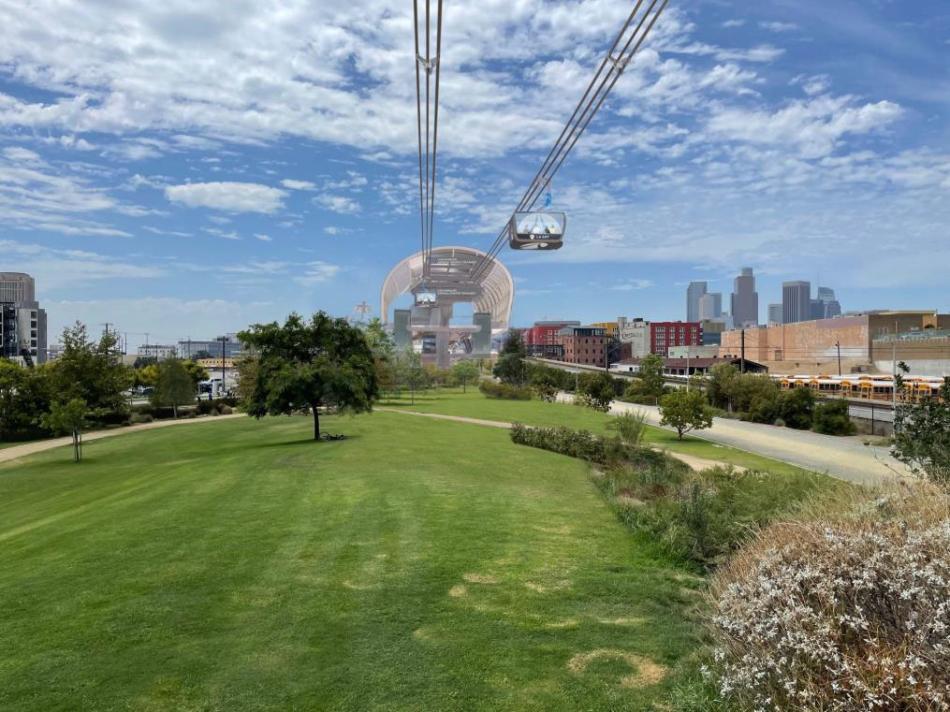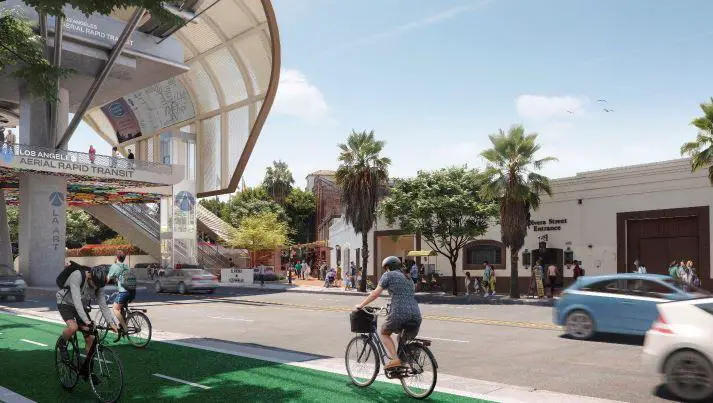The final environmental impact report (EIR) for an aerial gondola system connecting the Dodger Stadium parking ota with the Los Angeles Union Station has been released. This signifies progress for the US$500 million project, first announced 5 years ago. The Los Angeles Aerial Rapid Transit project is backed by Frank McCourt, the former owner of the Dodgers team. It calls for the construction of a 1.2-mile system connecting the ballpark via Chinatown.
Also Read: First Phase of Construction Underway at Kanye Stadium
Cables suspended over 100 feet above Alameda Street running north until the Los Angeles State Historic Park. From here, the route will veer west of Bishops Road towards Dodger Stadium. Additionally, the line includes a stop next to both L.A. State Historic Park and Chinatown. As part of that intermediate station, the gondola project would add new pedestrian improvements. They will connect with the adjacent A Line Station and within the park itself, as well as a concession area with restrooms and a covered breezeway.
Other listed project benefits include opportunities for public art and support for a planned pedestrian bridge. Moreover, it provides access to the park from the stretch of North Broadway which runs along an adjacent bluff.

Details on the Dodger Stadium Gondola project
In addition, per the environmental study, the maximum capacity of the gondola system is estimated to be 5,000 passengers per hour. This includes free admission provided with a ticket to a Dodger game, and all other rides priced the same as a Metro fare. Cabins would travel at a speed of approximately 13.4 miles per hour with headways of 23 seconds. This brings the end-to-end trip time to seven minutes. Further, the gondola will require the approval of several state and local agencies. This includes the Caltrans, California State Parks, Metro, and the City of Los Angeles. Should those approvals be granted, construction could commence as early as 2024 and conclude within 25 months.

